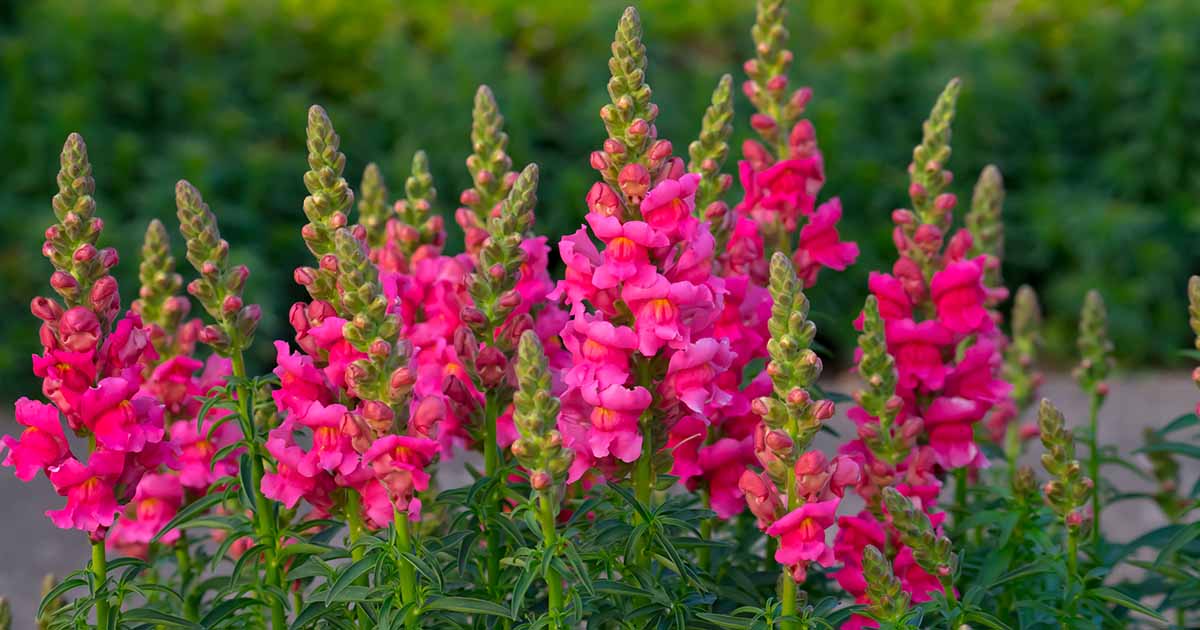
The Snapdragon, also known as Antirrhinum, is a unique and fascinating flowering plant that belongs to the Plantaginaceae family. With its vibrant colors and distinct shape, it has captured the attention of gardeners, botanists, and nature enthusiasts around the world.
In this article, we will delve into the world of Snapdragons and explore eleven fascinating facts about this beautiful plant. From its origins and symbolism to its impressive range of colors and unique flowering habits, we will uncover the secrets behind this beloved garden favorite.
So, if you’re curious to learn more about Snapdragons and discover some interesting tidbits that you may not have known before, then read on for a captivating journey into the enchanting world of these remarkable plants.
Key Takeaways:
- Snapdragon flowers are like colorful, fragrant dragons! They come in vibrant colors, have a unique mechanism, and attract bees and butterflies with their sweet scent.
- Whether you’re a seasoned gardener or just starting out, Snapdragon plants are easy to grow and bring beauty to any garden. Plus, they have been used in traditional medicine for centuries!
Snapdragon belongs to the Plantaginaceae family.
With its scientific name Antirrhinum, Snapdragon is a genus of flowering plants that are native to the Mediterranean region and parts of North America.
The name “Snapdragon” comes from the presence of a unique mechanism in its flowers.
When the sides of the flower are gently squeezed, it opens and closes like a dragon’s mouth, hence the name “Snapdragon.”
Snapdragon flowers come in a wide variety of vibrant colors.
From bold hues of red, orange, and yellow to softer shades of pink, white, and purple, these flowers add a pop of color to any garden or floral arrangement.
Snapdragon is a popular choice for cut flowers.
Due to its long vase life and striking appearance, Snapdragon is often used in bouquets and floral displays.
Snapdragon flowers are known for their unique fragrance.
Their sweet and slightly musky scent is particularly enticing to bees, butterflies, and hummingbirds, making them a favorite among pollinators.
Snapdragon plants can grow up to 3 feet tall.
These vertical growers make for an impressive display in the garden, especially when planted in groups or along borders.
Snapdragon is a versatile plant that can thrive in various climates.
Whether you live in a hot and dry climate or a cooler region, there are Snapdragon varieties suited for different environmental conditions.
Snapdragon flowers have both aesthetic and ecological value.
In addition to their visual appeal, these flowers contribute to the overall biodiversity of ecosystems by providing nectar and pollen for beneficial insects.
Snapdragon has been used in traditional medicine for centuries.
Its extracts have been used to treat common ailments such as sore throat, cough, and skin inflammations.
Some Snapdragon varieties have a unique trailing habit.
These trailing Snapdragons are often used in hanging baskets and cascading floral arrangements, adding a touch of elegance and beauty.
Snapdragon is an easy-to-grow plant for both experienced and novice gardeners.
With proper care and minimal maintenance, Snapdragon plants can thrive and provide stunning blooms year after year.
Conclusion
In conclusion, snapdragons are fascinating plants that have captivated gardeners and plant enthusiasts for centuries. From their unique appearance and symbolism to their medicinal uses and ability to attract pollinators, snapdragons continue to be a popular choice for gardens around the world. Whether you’re planning to grow them in your own backyard or simply appreciate their beauty, snapdragons are sure to bring color and charm to any landscape. So go ahead, explore the diverse world of snapdragons and embrace their fascinating characteristics.
FAQs
Q: How do snapdragons get their name?
A: Snapdragons get their name from the way their flowers open and close like a dragon’s mouth when squeezed from the sides.
Q: Are snapdragons edible?
A: While snapdragons are not typically grown for culinary purposes, their flowers can be consumed in moderation and used to decorate cakes, salads, and other dishes.
Q: Do snapdragons attract bees and butterflies?
A: Yes, snapdragons are known to attract bees, butterflies, and other beneficial insects due to the nectar and pollen they produce.
Q: How long do snapdragons bloom?
A: The blooming period of snapdragons depends on the specific variety and growing conditions, but they generally bloom for several weeks to a few months.
Q: Can snapdragons grow in containers?
A: Yes, snapdragons can be grown in containers as long as they have enough space for their roots to grow and receive adequate sunlight and water.
Snapdragons captivate with their vibrant colors and unique flower formations, but there's more to explore about these stunning blooms. Delve into additional snapdragon flower facts that will leave you craving more knowledge. Uncover mindblowing details about snapdragons' fascinating characteristics and cultivation. Satisfy your curiosity by learning even more intriguing snapdragons flowers facts that will make you appreciate these plants in a whole new light.
Was this page helpful?
Our commitment to delivering trustworthy and engaging content is at the heart of what we do. Each fact on our site is contributed by real users like you, bringing a wealth of diverse insights and information. To ensure the highest standards of accuracy and reliability, our dedicated editors meticulously review each submission. This process guarantees that the facts we share are not only fascinating but also credible. Trust in our commitment to quality and authenticity as you explore and learn with us.
